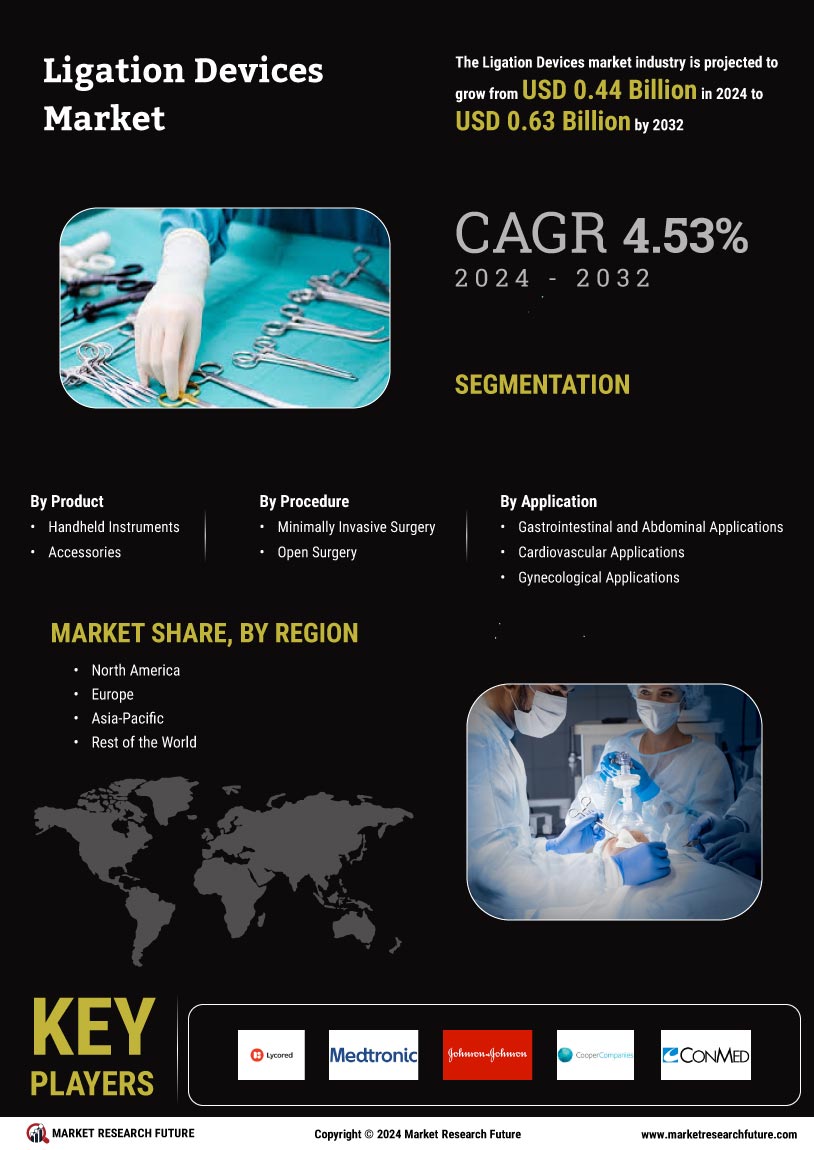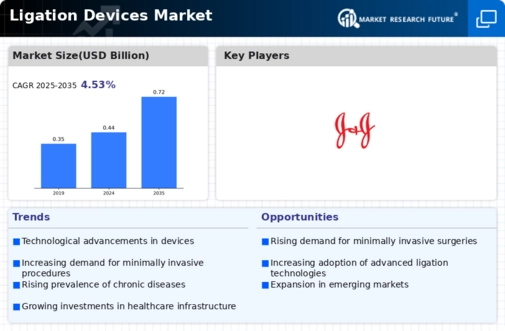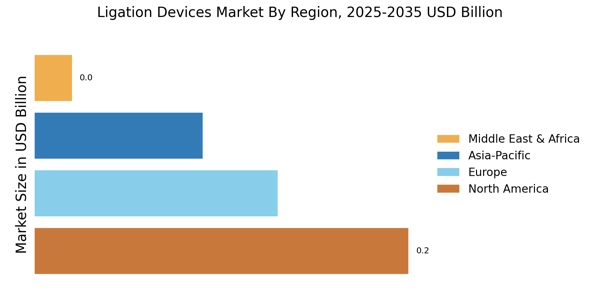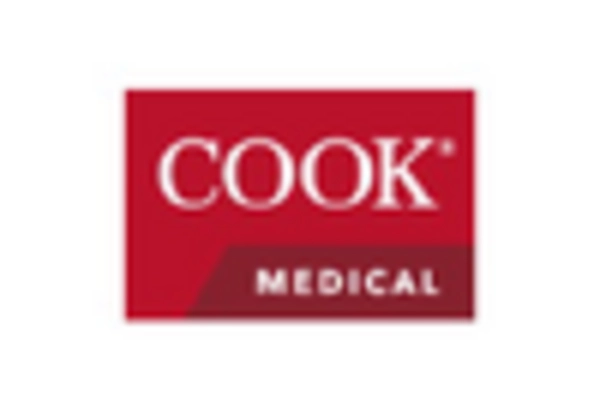Surge in Surgical Procedures
The rise in the number of surgical procedures performed worldwide is significantly influencing the Ligation Devices Market. As surgical techniques evolve, the demand for ligation devices is expected to increase. Data indicates that the number of surgeries, particularly minimally invasive procedures, has been on the rise, which correlates with the growing adoption of ligation devices. This trend is likely to continue as healthcare systems strive to improve patient outcomes and reduce recovery times. The increasing volume of surgeries necessitates the availability of effective ligation solutions, thereby creating a robust market for ligation devices. Additionally, the expansion of surgical facilities and advancements in surgical training may further contribute to this growth.
Rising Prevalence of Chronic Diseases
The increasing incidence of chronic diseases such as cancer, cardiovascular disorders, and gastrointestinal conditions is a primary driver of the Ligation Devices Market. As these diseases often require surgical interventions, the demand for ligation devices is expected to rise. According to recent statistics, the prevalence of chronic diseases is projected to increase, leading to a higher number of surgical procedures. This trend suggests that healthcare providers will increasingly rely on ligation devices to manage these conditions effectively. The growing patient population necessitates innovative solutions, thereby propelling the ligation devices market forward. Furthermore, advancements in ligation technology may enhance surgical outcomes, further driving market growth.
Growing Awareness and Training Programs
The increasing awareness of ligation techniques and the establishment of training programs for healthcare professionals are driving the Ligation Devices Market. As more surgeons become proficient in using ligation devices, the adoption rate is expected to rise. Educational initiatives and workshops aimed at enhancing surgical skills are being implemented in various regions, which may lead to a more skilled workforce. This trend suggests that as healthcare professionals become more knowledgeable about the benefits and applications of ligation devices, the market will likely experience growth. Additionally, partnerships between medical device manufacturers and educational institutions may further enhance the reach and effectiveness of these training programs.
Regulatory Support and Reimbursement Policies
Supportive regulatory frameworks and favorable reimbursement policies are crucial drivers of the Ligation Devices Market. Governments and health authorities are increasingly recognizing the importance of ligation devices in surgical procedures, leading to streamlined approval processes. This regulatory support encourages manufacturers to innovate and bring new products to market. Furthermore, favorable reimbursement policies for ligation procedures can enhance the accessibility of these devices, making them more appealing to healthcare providers. As reimbursement rates improve, hospitals and clinics are more likely to invest in ligation devices, thereby stimulating market growth. This trend indicates a positive outlook for the ligation devices market as it aligns with broader healthcare objectives.
Technological Innovations in Ligation Devices
Technological advancements in ligation devices are transforming the Ligation Devices Market. Innovations such as the development of advanced materials, improved design, and enhanced functionality are making ligation devices more effective and user-friendly. These innovations not only improve surgical outcomes but also increase the efficiency of procedures. The introduction of smart ligation devices, which may incorporate features like real-time feedback and enhanced visualization, is expected to attract more healthcare providers. As a result, the market is likely to witness a surge in demand for these technologically advanced devices. Furthermore, ongoing research and development efforts are anticipated to yield new products that could further expand the market.


















Leave a Comment